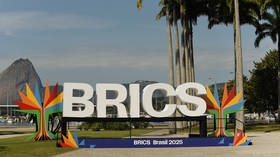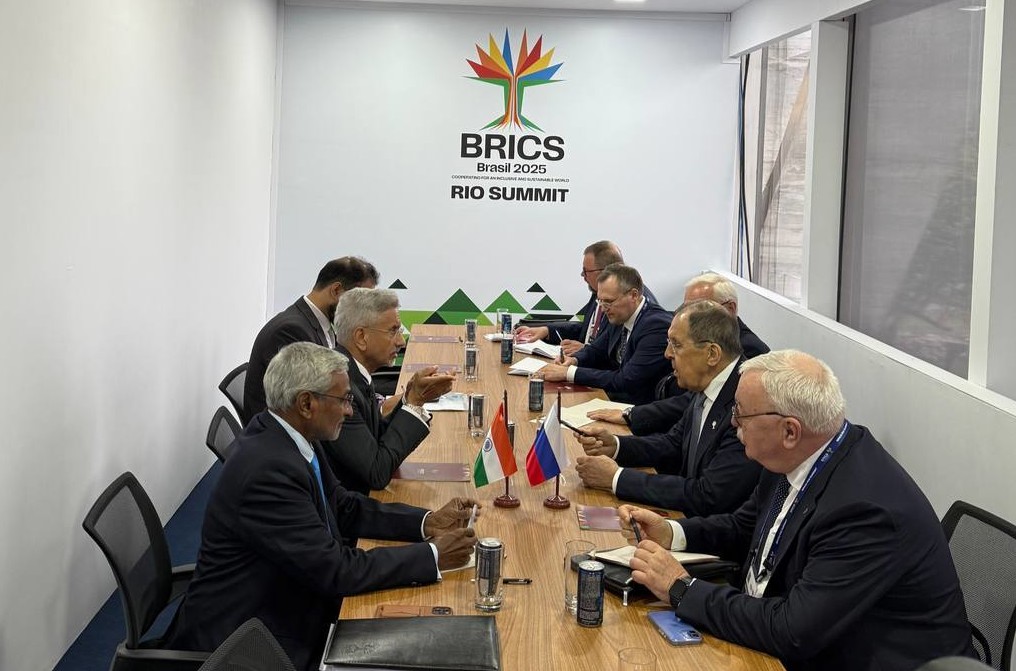Latin America has the fastest aging population in world
According to projections from the National Institute of Statistics, the country's total fertility rate dropped to 1.27 children per woman in 2023 and is expected to fall to 1.20 by the end of this year -- well below the replacement-level threshold of 2.1.
The population, which peaked at 3.51 million people in 2020, is projected to decline steadily, falling to some 3 million by 2070. By then, more than 32% of residents will be over 65, while only 11.5% will be under 15.
Though Uruguay leads the trend, population aging is accelerating across Latin America.
While the region is not the oldest in absolute terms -- Europe and East Asia have higher shares of older adults -- it is aging faster than anywhere else in the world.
According to the United Nations Population Division, Latin America will make the demographic shift from a young to an aging society in less than 40 years -- a transition that took Europe more than a century.
In countries such as Chile, Brazil and Argentina, more than 15% of the population is now over the age of 65, and the median age exceeds 32, reflecting a rapid demographic shift.
This shift coincides with a long-term drop in fertility, now averaging 1.8 children per woman. The decline is linked to a range of factors: improved access to education, increased female labor force participation, urbanization and evolving family values.
One particularly significant factor has been the decline in teenage pregnancies, which for years accounted for a substantial share of total births in several countries. In Latin America, fertility among women ages 15 to 19 remained high even as it declined in other age groups -- but over the past decade, it has dropped sharply.
Helena Cruz Castanheira, a demographer at the Latin American and Caribbean Demographic Center of the United Nations Economic Commission for Latin America and the Caribbean, said the decline happened faster than expected.
"We expected the fertility rate to stabilize around the replacement level -- 2.1 children per woman -- by 2020, but overall fertility continued to fall below that threshold, and one reason was the significant drop in births among teenagers," she said.
Uruguay again offers a clear example: between 2016 and 2018, access to free subdermal contraceptive implants accounted for one-third of the decline in teen fertility.
This trend is playing out in other countries, as well. In Colombia, for example, 2024 saw the lowest number of births ever recorded -- 445,011 -- of which only 3,159 were to teenage mothers.
Marijuana
> The Astounding Effects It Is Having on Civilization - No one is talking
about
Although the average age of first sexual activity has remained stable -- or even declined -- in some countries, what has changed is increased access to and use of contraceptives, partly due to public policies focused on sexual and reproductive health.
Still, Latin America and the Caribbean continue to have the second-highest rate of teenage fertility in the world, with 52 births per 1,000 women ages 15 to 19 in 2022, compared with the global average of 39.
Each year, more than 1.6 million girls and teens in Latin America become mothers -- many of them victims of sexual abuse and living in poverty and vulnerable conditions. This reality limits their access to education and employment and reinforces intergenerational inequality.
Cruz emphasized that the goal of demographic policy should be to ensure women can have the number of children they want, when they choose to.
"Unplanned teenage pregnancies are associated with more difficult life paths for young mothers. That's why countries must continue investing in sexual health, family planning and education," she said.
According to a report from Austral University in Argentina, only Ecuador, Paraguay, Mexico and Peru currently show a more favorable outlook, with a larger share of youth under 15 -- suggesting greater long-term productive potential.
By contrast, the population age 65 and older has grown steadily across the region, reaching or surpassing 15% in several countries. This trend is reflected in indicators such as median age, which now exceeds 30 in most nations. Uruguay, Chile, Brazil and Argentina report the highest figures.
As the population ages, there are fewer working-age people for each retiree.
Uruguay offers a clear warning: aging is happening faster than expected. Without adjustments to social, health, pension and elder care policies, the economic and social consequences could be severe.
Isn't it ironic that Latin Americans are coming to the USA to make more money, and retiring Americans are moving to Latin America because their money is worth more there?
Index: 3 Latin American nations offer nicer lifestyles for U.S. retirees
July 29 (UPI) -- Panama, Mexico and Costa Rica have emerged as leading destinations for U.S. retirees this year, offering a more affordable, safer and more comfortable lifestyle overseas, according to the 2025 Global Retirement Index prepared by International Living magazine.
The rising global population over age 65 -- projected to reach 16% by 2050, according to Statista -- is driving a wave of retiree migration focused on mild climates, access to quality healthcare and an active lifestyle with lower financial strain.
Data from the Social Security Administration show that more than 730,000 U.S. retirees receive their benefits while living abroad, with Latin America accounting for a growing share.
Panama tops the global retirement rankings for its accessible pensioner visa, political stability and retiree perks, including 25% discounts on electricity and restaurant bills, and up to 50% off cultural activities.
The cost of living there for a couple starts at about $2,400 per month. The country also offers 18-month temporary residency through a remote work visa.
Mexico ranks fourth, driven by its low cost of living, cultural diversity and affordable healthcare. According to the report, a retiree can live comfortably on about $1,500 a month. In tourist areas such as the Riviera Maya, monthly rent averages around $500.
Puerto Vallarta, San Miguel de Allende and Chapala remain among the most popular destinations for U.S. retirees.
Costa Rica, ranked third in the index, attracts retirees with its biodiversity, peaceful environment and high-quality medical care. Residency is available with a minimum monthly income of $1,000, and housing can be found starting at $550 a month.
The Central Valley is especially popular for its mild climate and proximity to top-tier healthcare services.
Rosmery Hernández, a professor at the National University of Costa Rica, said the country "has spent decades building a quality-of-life environment based on public policy, education and civic participation, which today makes it attractive to retirees from the United States and Europe."
She also noted that Costa Rica offers a strong healthcare system, easy access to international flights and infrastructure that makes travel within the country easy.
However, Hernández warned that the growth of the international retiree market has accelerated gentrification in areas like Guanacaste, raising the cost of services and land for local residents.
"The challenge is finding a balance that allows local communities to coexist with new international residents, creating mutual benefits without triggering displacement," she said.
While European countries like Portugal, Spain and France also rank among the top international retirement destinations, Latin America offers advantages such as geographic proximity to the United States, more flexible immigration policies and a cultural environment that feels more familiar to many Americans, according to the retirement index.
All three Latin American countries have strengthened their immigration frameworks and services to attract this demographic, as more U.S. citizens view retiring abroad as both a financially viable and socially enriching option.












